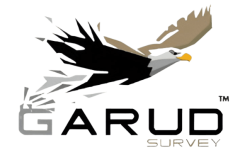Aerial Intelligence For Disaster Management
Disaster Management
Garud Survey leads in disaster management, leveraging advanced technologies to minimize the impact of natural and man-made disasters. Committed to safeguarding lives and infrastructure, we provide comprehensive solutions, elevating preparedness, response, and recovery efforts.
Garud Survey’s disaster management integrates technologies like remote sensing and GIS mapping. Rigorous risk assessments identify hazards and formulate evacuation plans, ensuring community safety. This proactive strategy enhances resilience against unforeseen challenges.
Garud Survey’s rapid response teams swiftly assess damage and prioritize recovery operations. Collaborating seamlessly with local authorities, we use real-time data for efficient coordination in rescue and relief efforts. This dynamic response mechanism ensures timely and effective assistance where needed.
Post-disaster, our damage assessment reports guide informed decisions for rehabilitation and reconstruction. Providing accurate and timely information, we assist stakeholders in allocating resources effectively and expediting the restoration of normalcy. Our dedication to disaster management is the cornerstone of resilience and preparedness, solidifying our role as a critical partner in ensuring the safety and well-being of communities and infrastructure in times of adversity.
Highlights
- Superior endurance & high-functioning drones for real-time information of the on-ground situation
- Rapid Assessment of the damaged infrastructures
- Smart Visual Analysis powered by AI
- Live drone-enabled video survey to pre-empt any possible dangers
- Planning rescue routes for stranded victims
use of drone in Disaster Management
Drones play a vital role in disaster management by providing crucial aerial perspectives for rapid assessment and response. These versatile devices enable efficient search and rescue operations, damage assessment, and real-time monitoring of disaster-stricken areas. Equipped with high-resolution cameras and sensors, drones quickly gather valuable data, aiding in decision-making and resource allocation. Their ability to access inaccessible terrain and hazardous zones enhances the safety of rescue teams. Drones revolutionize disaster management by delivering swift, accurate insights, optimizing coordination, and minimizing risks during critical situations.
- Damage Assessment
- Search and Rescue
- Communication Infrastructure
- Mapping and 3D Modeling
- Environmental Monitoring
- Post-Disaster Recovery Planning
- Route Planning and Access
- Situational Awareness
- Hazardous Environment Assessment
- Public Awareness
- Data Collection and Analysis
FAQ?
Drone Disaster Management is the practice of utilizing drones to assess, respond to, and mitigate the effects of disasters or emergencies, such as natural disasters, industrial accidents, or other critical situations.
Drones can provide aerial surveillance, deliver essential supplies, assess damage, locate survivors, and offer real-time data for better decision-making during disasters.
Drones can access hard-to-reach areas, minimize risk to human responders, reduce response times, and enhance situational awareness, ultimately saving lives and resources.
Yes, there are regulations in place to ensure the safe and responsible use of drones in disaster management. These regulations vary by country and region and may include restrictions on flight altitudes, flight near airports, and data privacy considerations.
Organizations should establish protocols, acquire appropriate drones and equipment, train personnel, and establish communication channels with relevant authorities and agencies.
